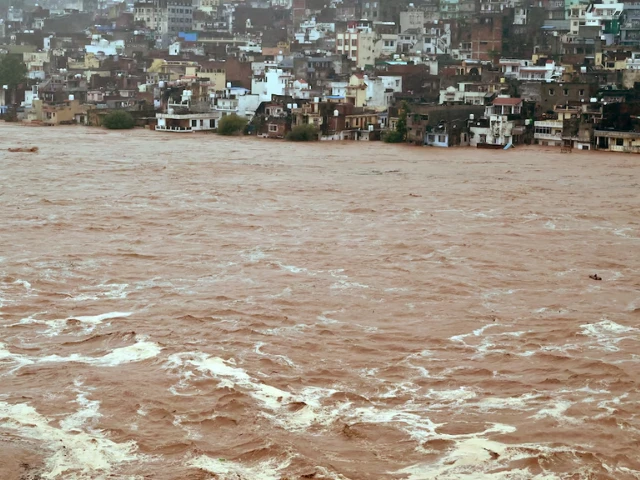
Water flows down the overflowing Tawi River following heavy rain in Indian Illegally Occupied Jammu and Kashmir, August 26, 2025. Photo: Reuters
At least 30 people were killed as heavy rain set off a landslide on Hindu pilgrimage route in Indian Illegally Occupied Jammu and Kashmir on Wednesday, according to Indian state-run ANI news agency. Citizens were cautioned to stay indoors at night.
The weather office has forecast more rain for the Himalayan region spanning federal territory of the region and mountainous Ladakh.
Authorities were trying to restore telecom services in the region where communication was “almost nonexistent”, said Omar Abdullah, the chief minister.
Still struggling with almost nonexistent communication. There is a trickle of data flowing on Jio mobile but no fixed line WiFi, no browsing, almost no apps, things like X open frustratingly slowly, WhatsApp struggles with anything more than short text messages. Haven’t felt this…
— Omar Abdullah (@OmarAbdullah) August 27, 2025
Read: Sudden, heavy rain in IIOJK leaves 46 dead
The landslide near shrine of Vaishno Devi on the pilgrim’s route killed at least 30 people, said ANI.
Authorities also ordered closure of educational institutions in the region, which weather officials said was deluged with 368 mm (14.5 inches) of rain on Tuesday.
The disaster was the latest in a series of downpours across the Himalayan region, which killed 60 people and left 200 missing in Kishtwar, IIOJK, last week.

Water from the overflowing Tawi River floods a temple of the Hindu elephant god Ganesh, the deity of prosperity, following heavy rain in Indian Illegally Occupied Jammu and Kashmir, August 26, 2025. Photo: Reuters
In early August, flooding and landslides triggered by heavy rain in India’s Himalayan state of Uttarakhand killed four people and left dozens missing, while continued downpours hampered rescue efforts.
Previously, India has gone through several devastating rain-related disasters, particularly in its Himalayan regions.
Read more: Northern India rescue ops hampered by rain, landslides
India receives most of its annual rainfall during the Southwest Monsoon, which occurs from June to September.
While this seasonal rain is vital for agriculture and the livelihoods of millions, it also brings intense downpours that often overwhelm the region’s infrastructure, leading to widespread flooding and damage.
